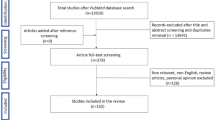Abstract
The presence of subtilisin genes (SUBs) coding for serine proteases with activities keratinolytic on dermatophyte species gives them the ability to adhere and degrade keratin during infection process. The aim of this study was to determine the presence of SUBs in Trichophyton rubrum and Microsporum canis from dermatophyte infections. In the current study, dermatophytes were isolated from human and animal with dermatophytosis. Isolates were identified by direct microscopic and laboratory examination; then, the isolates were examined for the presence of the SUB gene family by PCR with specific primers. This study showed the most frequency of SUB gene families (11/17). At least one virulence gene was observed for 94% (16/17) of the isolates. Statistical analysis revealed significant associations between SUB presence and isolates, origin of isolates (animal or human infection) and infection type (skin, hair, and nail) (P < 0.05). This is the first report on the presence/absence of SUB genes in isolates that were obtained from human and animal infection in Iran, which seems to raise the risk to be pathogenic.


Similar content being viewed by others
References
Baldoa A, Mathy A, Tabart J, Camponova P, Vermout S, Massart L, Maréchal F, Galleni M, Mignon B (2010) Secreted subtilisin Sub3 from Microsporum canis is required for adherence to but not for invasion of the epidermis. Br J Dermatol 162:990–997
Baldoa A, Monod M, Mathy A, Cambier L, Bagut ET, Defaweux V, Symoens F, Antoine N, Mignon B (2012) Mechanisms of skin adherence and invasion by dermatophytes. Mycoses 55(3):218–223
Brillowska-Dabrowska A, Michalek E, Lindhardt Saunte DM, Gaard Nielsen D (2013) PCR test for Microsporum canis identification. Med Mycol 51:576–579
Brouta F, Descamps F, Monod M, Vermout S, Losson B, Mignon B (2002) Secreted metalloprotease gene family of Microsporum canis. Infect Immun 70:5676–5683
Chinnapun D (2015) Virulence factors involved in pathogenicity of dermatophytes. Walailak J Sci & Tech 12(7):573–580
Descamps F, Brouta F, Monod M, Zaugg C, Baar D, Losson B (2002) Isolation of a Microsporum canis gene family encoding three subtilisin-like proteases expressed in vivo. J Investig Dermatol 119:830–835
Deshmukh SK (2004) Isolation of dermatophytes and other Keratinophilic fungi from the vicinity of salt pan soils of Mumbai, India. Mycopathol 157(3): 265–267
Giddey K, Monod M, Barblan J, Potts A, Waridel P, Zaugg C, Quadroni M (2007) Comprehensive analysis of proteins secreted by Trichophyton rubrum and Trichophyton violaceum under in vitro conditions. J Proteome Res 6:3081–3092
Jaton-Ogay K, Suter M, Crameri R, Falchetto R, Fatih A, Monod M (1992) Nucleotide sequence of a genomic and a cDNA clone encoding an extracellular alkaline protease of Aspergillus fumigatus. FEMS Microbiol Lett 92:163–168
Jousson O, Lechenne B, Bontems O, Mignon B, Reichard U, Barblan J (2004) Secreted subtilisin gene family in Trichophyton rubrum. Gene 339:79–88
Lemsaddek L, Chambel L, Tenreiro R (2010) Incidence of fungalysin and subtilisin virulence genes in dermatophytes. In: A Mendez Vials (ed) Current research, technology and education topics in applied microbiology and microbial biotechnology. Formatex Research Center, Badajoz, pp. 658–665
Leng W, Liu T, Wang J, Li R, Jin Q (2009) Expression dynamics of secreted protease genes in Trichophyton rubrum induced by key host’s proteinaceous components. Med Mycol 47(7):759–765
Lunder M (1992) Is Microsporum canis infection about to become a serious dermatological problem? Dermatology 184(2):87–89
Maranhao FC, Paiao FG, Martinez-Rossi NM (2007) Isolation of transcripts over-expressed in human pathogen Trichophyton rubrum during growth in keratin. Microb Pathog 43:166–172
Méhul B, Gu Z, Jomard A, Laffet G, Feuilhade M, Monod M (2016) Sub6 (Tri r 2), an onychomycosis marker revealed by proteomics analysis of Trichophyton rubrum secreted proteins in patient nail samples. J Investig Dermatol 136(1):331–333
Monod M, Capoccia S, Lechenne B, Zaugg C, Holdom M, Jousson O (2002) Secreted proteases from pathogenic fungi. Int J Med Microbiol 292:405–419
Monod M, Lechenne B, Jousson O, Grand D, Zaugg C, Stöcklin R (2005) Aminopeptidases and dipeptidyl-peptidase secreted by the dermatophyte Trichophyton rubrum. Microbiology 151:145–155
Noorbakhsh F, Mirrahimi M, Rezaie S, Ajodanifar H (2013) Characterization of squalene epoxidase encoding gene in dermatophyte pathogen Trichophyton violaceum. J Microbial World 6(3):212–218
Seebacher C, Bouchara JP, Mignon B (2008) Updates on the epidemiology of dermatophyte infections. Mycopathol 166:335–352
Seker E, Dogan N (2011) Isolation of dermatophytes from dogs and cats with suspected dermatophytosis in western Turkey. Prev Vet Med 98(1):46–51
Woodfolk JA, Wheatley LM, Piyasena RV, Benjamin DC, Platts-Mills TA (1998) Trichophyton antigens associated with IgE antibodies and delayed type hypersensitivity. Sequence homology to two families of serine proteinases. J Biol Chem 273:29489–29496
Acknowledgements
We thank the Department of Medical Mycology Clinical Laboratory in Tehran and Department of Veterinary Microbiology, Shahid Bahonar University of Kerman, Iran.
Funding
This was a self-funded study.
Author information
Authors and Affiliations
Contributions
Azadeh karami Robati, Mohammad Khalili, Seyed Jamal Hashemi Hazaveh, and Mansour Bayat conceived and designed the research. Azadeh karami Robati and Seyed Jamal Hashemi Hazaveh collected samples and clinical data. Azadeh karami Robati performed the research. Azadeh karami Robati analyzed the data. Azadeh karami Robati and Seyed Jamal Hashemi Hazaveh wrote the paper. All authors read and approved the final manuscript.
Corresponding author
Ethics declarations
Conflict of interest
The authors declare that they have no conflict of interest.
Ethical issues
All procedures performed in studies involving human participants were in accordance with the ethical standards of the institutional and/or national research committee and with the 1964 Helsinki declaration and its later amendments or comparable ethical standards. All applicable international, national, and/or institutional guidelines for the care and use of animals were followed. Informed consent was obtained from all individual participants included in the study and the Research Committee of Science and Research Branch, Islamic Azad University, Tehran, Iran, approved this study.
Rights and permissions
About this article
Cite this article
Karami Robati, A., Khalili, M., Hashemi Hazaveh, S.J. et al. Assessment of the subtilisin genes in Trichophyton rubrum and Microsporum canis from dermatophytosis. Comp Clin Pathol 27, 1343–1347 (2018). https://doi.org/10.1007/s00580-018-2745-y
Received:
Accepted:
Published:
Issue Date:
DOI: https://doi.org/10.1007/s00580-018-2745-y




